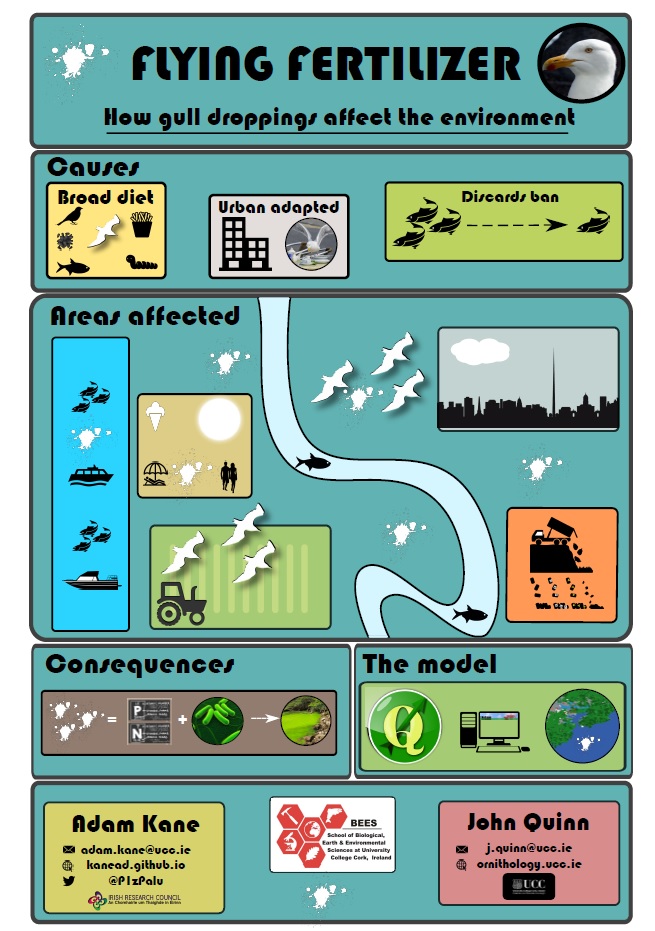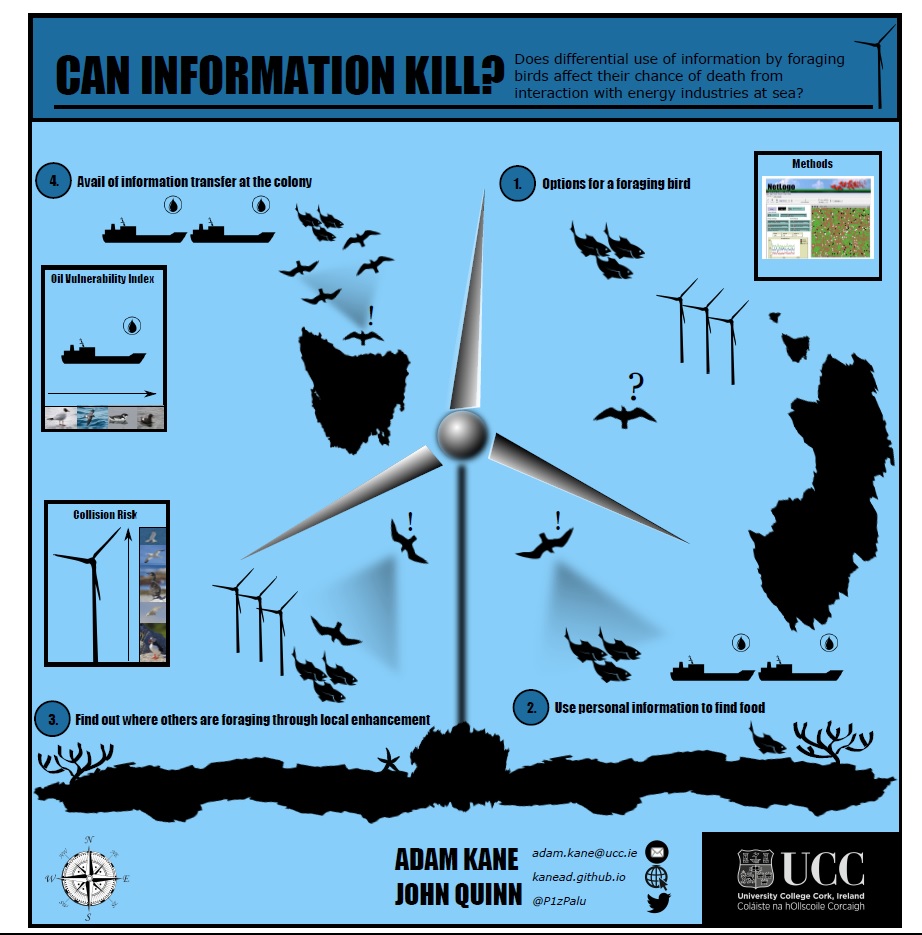Modelling the impacts of fossils and renewable energy industries on internationally protected seabird populations around Ireland
Dr Adam Kane is conducting a postdoctoral research project entitled “Modelling the impacts of fossils and renewable energy industries on internationally protected seabird populations around Ireland” under the mentorship of Professor John Quinn. Adam is investigating questions about information transfer in seabirds as well as the conservation of the group. As part of this, he is developing a model to quantify nutrient loading, and is also working on tagging and tracking Storm Petrels (see abstracts below).
Nutrient Loading Model
Animals impact their own environment and that of co-occurring species by simply moving around. Notably, as an animal excretes and defecates it will cause nutrient loading, a process that can radically affect environmental features such as primary productivity and water quality leading to changes in community composition and exposure to disease; excreta may even contain pathogens harmful to human health. Efforts to describe this process typically follow an analytical or numerical approach such that the spatial nature of the system is poorly represented. Spatially explicit models however, can redress this issue. Here I am developing an agent-based model in combination with GIS land cover data to demonstrate a more suitable method for quantifying nutrient loading where the nature of the recipient habitat is of interest.
Storm Petrel Tracking



